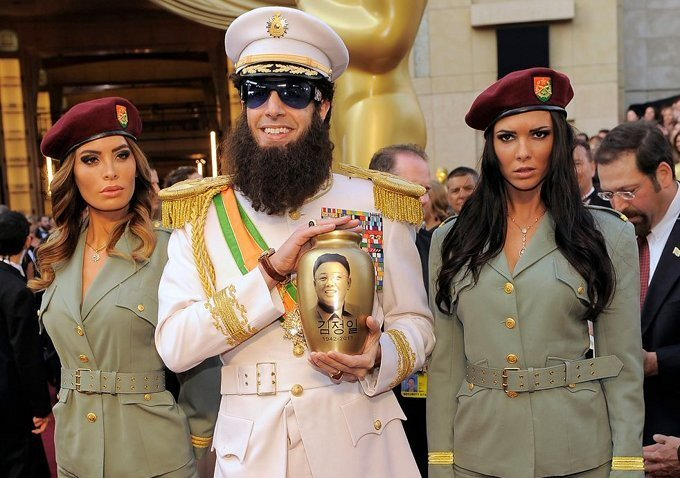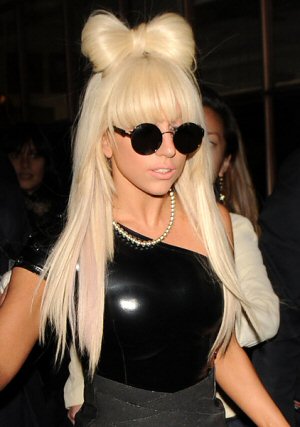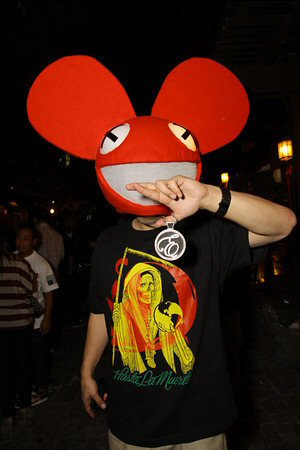
March 2012
New! Check me out on Twitter, or friend me on Facebook!

Admiral General Aladeen attends the 2012 Oscars
A new measure of career success
Before we get into this topic, this month we noted that Ernest Wilkinson passed away, and we recently have also added a biographical sketch of Peter Gibson, inventor of the Vivaldi antenna (Gibson died in 2010). Both had lasting contributions to microwave engineering, and by all accounts were humble men. So what is a measure of successful career in a technical field? Surely it is not how much money you made, what types of cars you've driven, how big your house is, and especially not how many people report to you.
The only measure of success in engineering is how much people miss you when you are gone, which is "earned" by helping others, taking risks and responsibility, and focusing on solving technical problems rather than on yourself. Unless you are Ebenezer Scrooge or Tom Sawyer, you won't be attending your own funeral, so we propose the following Figure of Merit of your lasting impact which you can ponder in your golden years...
When you finally retire, chances are your organization will feel it necessary to throw you a little shindig in honor of all of your "years of service". At this party, your contribution to mankind is inversely proportional to how much cake is left over. If you were a big shot at work and people had to kiss up to you, you are in for a cakey surprise. Better bring some big containers, you wouldn't want your entire career to be a waste, right? However, it's a safe bet that Wilkinson and Gibson didn't take home any leftovers. Get it?
On the other hand, if you quit after 30 years, you shouldn't expect a cake, but that is a story we will save for another time...
Back to Kayfabe...
The professional wrestling term for assuming an identity is "kayfabe". Wrestling has created a pretty good lexicon of terms for itself, superior to engineering's lame attempts.
When you think about it, the Unknown Editor could just be a kayfabe, nothing to do with a real person. He acts like a grumpy, alcohol-fueled fifty-something-year-old microwave engineer with a healthy dose of Asperger's Syndrome, laughing all the way to the bank, but how do you know his "Day Job" isn't serving a live sentence at San Quentin for impersonating a tinpot dictator and this web site isn't operated by the KGB? How do you know if he is white, straight or even male? How do you know that talk radio host and global warming denier Mark Levin is not a closet liberal that couldn't make money at progressive talk radio? You don't. But it is a safe bet to assume that Levin is probably not a scientist in real life.
Speaking from personal experience, one origin of the Unknown Editor kayfabe was Murray Langston's Unknown Comic, an individual provided some of the best yuks on Chuck Barris' Gong Show. Barris got his career started on American Bandstand and wrote the #3 hit Palisades Park for the guy that made the most career appearances on AB, Freddy Cannon. Hmmm, there goes that ADHD again...
Chuck Barris introduces the Unknown Comic.
That last joke starts with "pistons"...
Music has had its share of kayfabes over the years. Today Lady Gaga is kayfabe of Stefani Joanne Angelina Germanotta. Deadmau5 is Joel Thomas Zimmerman.
|

Gaga
|

Deadmau5
|
Back in the early 1970s, Ziggy Stardust was David Bowie's kayfabe for a time. Bowie's original name was David Robert Jones, and had to abandon it when The Monkeys became a television hit. David Bowie famously grew tired of his kayfabe and dropped it all at once after a concert on July 3, 1973 as he was "having doubts about (his) sanity".

Ziggy Stardust
Korla Pandit
But where did the idea that a musical performer become a different person, in the modern age of video media?
It all began with Korla Pandit.
Korla Pandit had a television show that started in 1948 in Los Angeles, back when commercial television was just getting started. Read about the father of electronic television, Philo Taylor Farnsworth, in our Microwave Hall of Fame! Pandit claimed to be the son of a Brahmin priest and a French opera singer, born in New Delhi, India. During the show, Korla Pandit would play Exotica music on an organ, stare at the camera, and never say a word. He had a huge following in southern California, in the days before Liberace had a TV audience (Liberace got his start when Pandit had contract problems). He is known as the Godfather of Exotica, a musical genre that is both interesting as it is fake; although we may imagine that Korla Pandit is playing "oriental" music, it is his personal creation, not true music from any region of the world.
Trance Dance
Exotica as a musical genre
A note to 6.7 billion people who live outside the United States is in order, I will try to speak for 300 million fellow countrymen without being completely ashamed... when Americans think exotic, we only mean in a fake, non-threatening way, with easy access to giant sugared beverages. Las Vegas is full of exotic sights, such as the Eifel tower, an Egyptian pyramid, Venetian canals, even Star Trek The Experience. These are of course all fake, yet as close to the real things as most Americans will get in their lifetimes. But we don't want to have to talk to you in an exotic language, maybe that is why Korla Pandit never spoke. A note to the people of Scotland... bagpipe music can never be considered Exotica, it is just cross-dressers making weird noises...
Watch below as Korla plays Miserlou as Exotica, long before the Surfaris, Beach Boys and Dick Dale and the Deltones made it into a Surf song. By the way, Dick Dale is playing at The Hut on 4th Avenue in Tucson on April 6, 2012, with his son on drums. If you attend you could meet the Unknown Editor...
Miserlou
Korla Pandit had minor roles in at least three movies. Below he plays himself in Tim Burton's production of Ed Wood. Ed Wood was a strange guy, directed some of the cheapest movies Hollywood every produced, including Plan Nine From Outer Space. Johnnie Depp does a great job playing Ed Wood, who often was a cross-dresser.
Later in life, Korla finally spoke on a television interview, on the occasion of the 40th anniversary of KGO. We've fast-forwarded eight minutes into this so you can hear him speak.
It was only after Korla Pandit died that the world came to know that he was actually John Rolan Redd, an African American born in Missouri. It all makes perfect sense that he adopted the Korla kayfabe, otherwise he would not have been given a career on television back in the middle of the last century. Korla Pandit missed out on the uniquely American experience of Little Richard, that of being a rock star and a second class citizen at the same time.
How is your life going for you? Maybe adopting a kayfabe is the answer!
For more information visit:
http://www.korlapandit.com/
Even in death (1998) Korla Pandit's web site mostly keeps up the kayfabe. But you can skip right to "the rest of the story" here:
http://www.korlapandit.com/historyparttwo.htm
Check out the Unknown Editor's amazing archives when you are looking for a way to screw off for a couple of hours or more!